Digiscoping is really hard. Isn’t that what everyone keeps saying? That it is almost impossible to get a good quality shot. That it is only really for record shots of something sitting still. 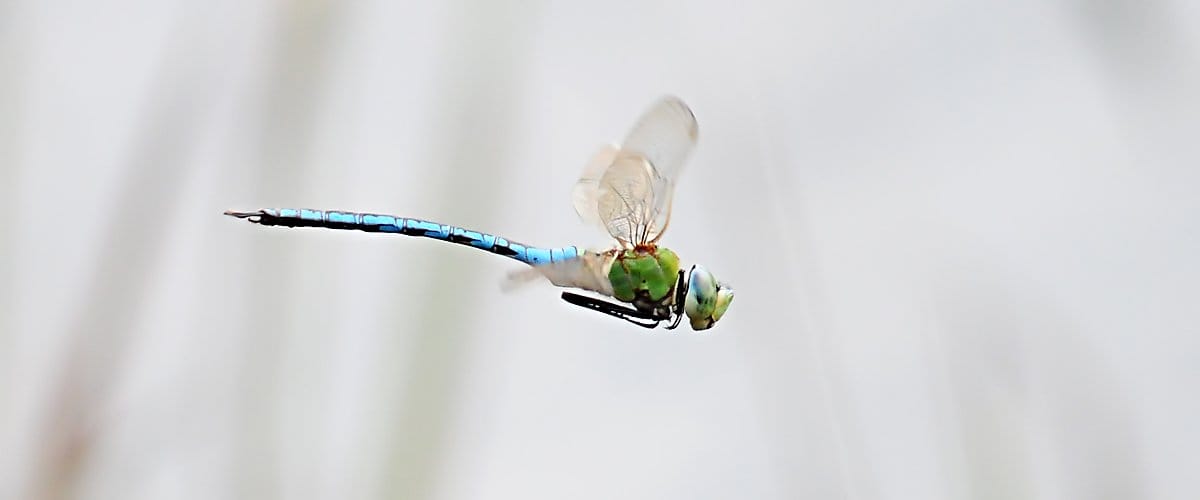 Digiscoped with a Swarovski STM80 HD, TLS800 and Nikon D300s. Click images to enlarge
Digiscoped with a Swarovski STM80 HD, TLS800 and Nikon D300s. Click images to enlarge
Well, the winners of the Digiscoper of the Year Competition each year show another picture. I am not saying it is necessarily easy, I am just saying it is possible to take great shots with digiscoping. I still cannot hit a golf ball straight, but practice helps. But if you really are looking for an easy way to take digiscoping snap-shots, check out my blog posts on “Really easy Digiscoping” and “A Crash Course in Digiscoping“.
Digiscoping Dragonflies
Birds are not the only interesting flying creatures on this planet that deserve a little digiscoping quality time.
Dragonflies are better than birds for the following important reasons:
- Dragonflies have 3 times as many legs
- Dragonflies have twice as many wings
- Dragonfly larvae can breathe water
- They are cool because I say so
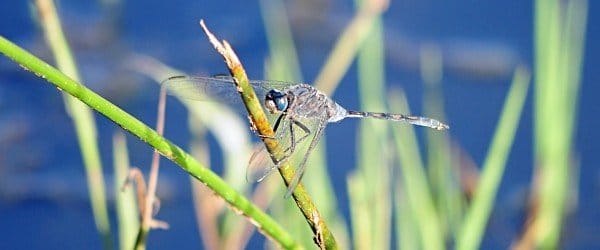 The easiest way to start digiscoping dragonflies is with large species that defend small territories returning to regular perches. You can then set up your camera system with focus and everything trained on one location. This will also allow you to sneak closer when the dragonfly is off sallying or chasing other dragonflies away. As soon as the dragonfly gets back to his perch, fire off a burst of photos. If he sticks about, check your settings and see if you can optimise anything to get better photos.
The easiest way to start digiscoping dragonflies is with large species that defend small territories returning to regular perches. You can then set up your camera system with focus and everything trained on one location. This will also allow you to sneak closer when the dragonfly is off sallying or chasing other dragonflies away. As soon as the dragonfly gets back to his perch, fire off a burst of photos. If he sticks about, check your settings and see if you can optimise anything to get better photos.
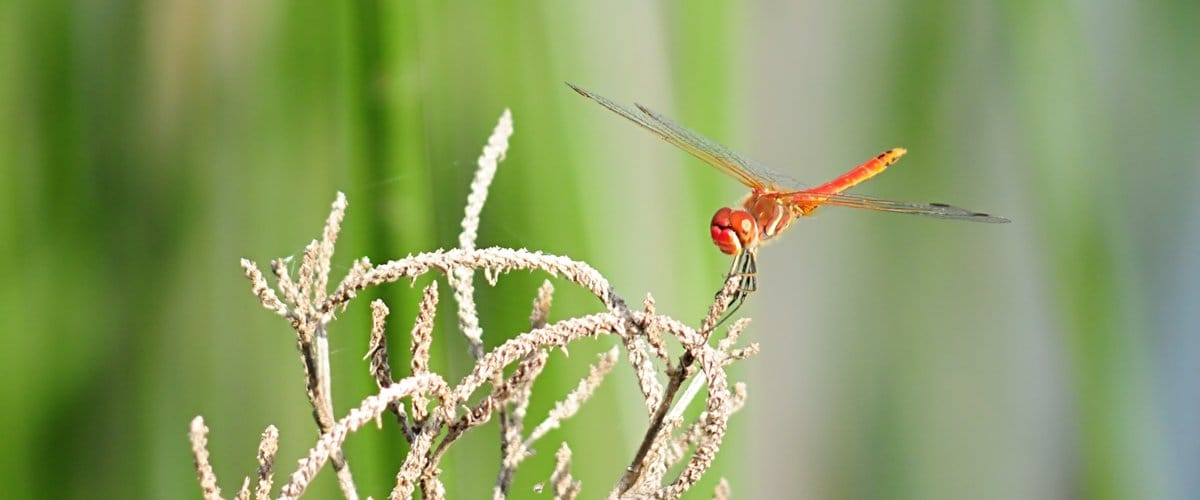 Try to find perches that have pleasant, non-disturbing backgrounds.
Try to find perches that have pleasant, non-disturbing backgrounds.
Blurred reeds and water can often make for wonderful effects.
Using this technique, you can get decent photos of dragonflies with a simple compact camera and for even more fun, just add HD video!
On to Digiscoping Flying Dragonflies
now this is where the fun really starts. this is going to take a little more time, practice and patience.
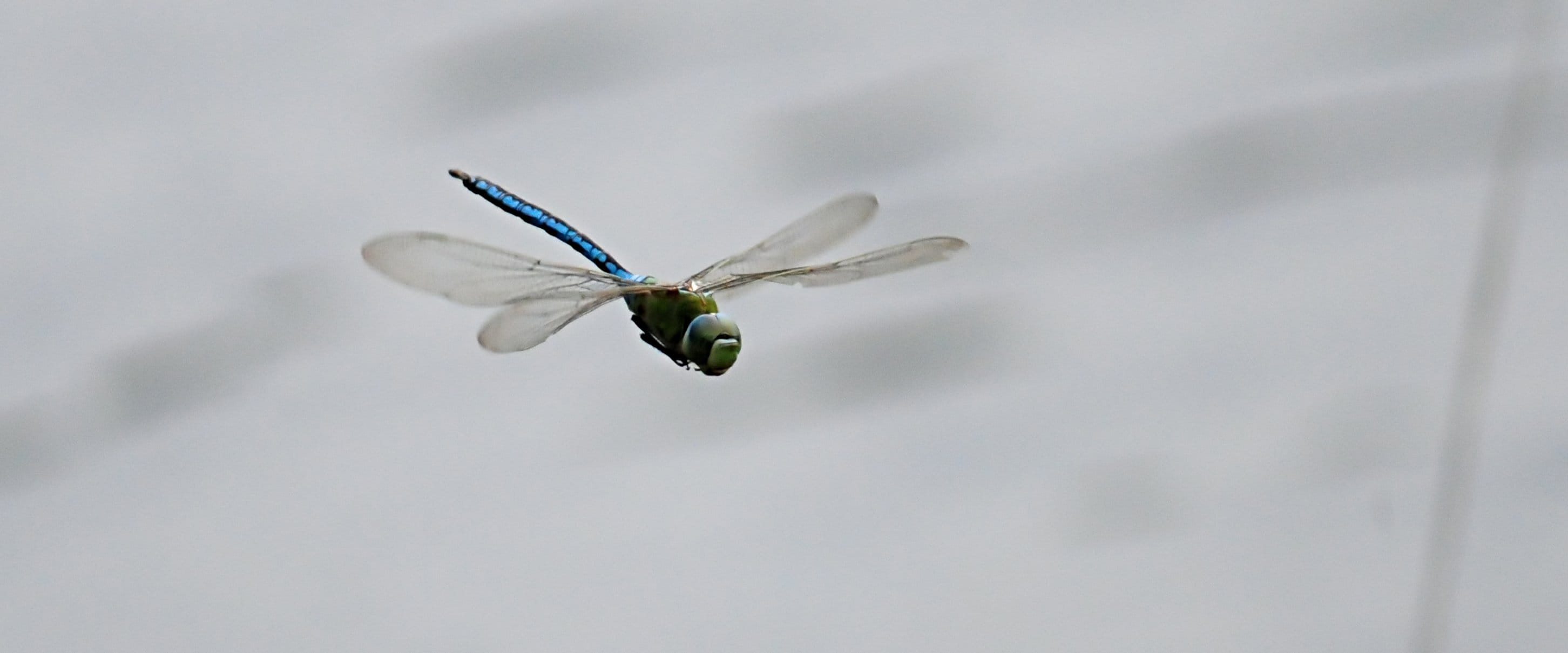 Photographing flying anythings is pretty much always easiest with:
Photographing flying anythings is pretty much always easiest with:
- a straight spotting scope (easier to find and track moving objects),
- an optical adapter (the TLS800 has great image quality and provides a really strong, stable attachment for flexibility of movement),
- and a DSLR with a good optical viewfinder (as you are going to have to adjust manual focus quickly).
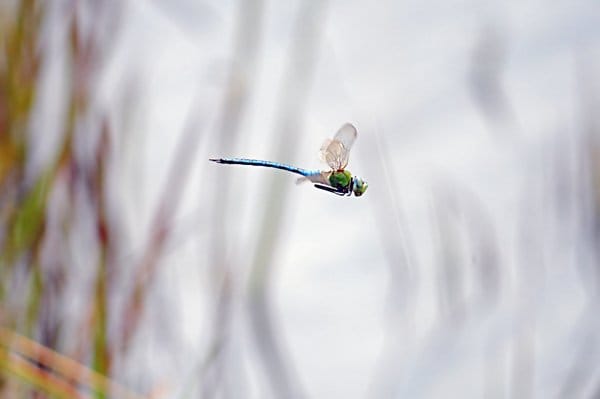 try to get the dragonfly as big as possible, but if the image is good enough, you can always crop it (the very top image was cropped out of this one)
try to get the dragonfly as big as possible, but if the image is good enough, you can always crop it (the very top image was cropped out of this one)
Starting with slower moving or hovering dragonflies is inevitably easiest as they will allow you a little more time to get your focus right. Take lots and lots of photos. Even the best digiscopers are throwing away a very high proportion of the photos they take. In fact, I would hazard that good digiscopers throw away a larger proportion of photos than most; not only because they are fussier, but because they understand and value that you need to use a bit of a shot-gun approach to digiscoping (take lots of photos and select out the cherries).
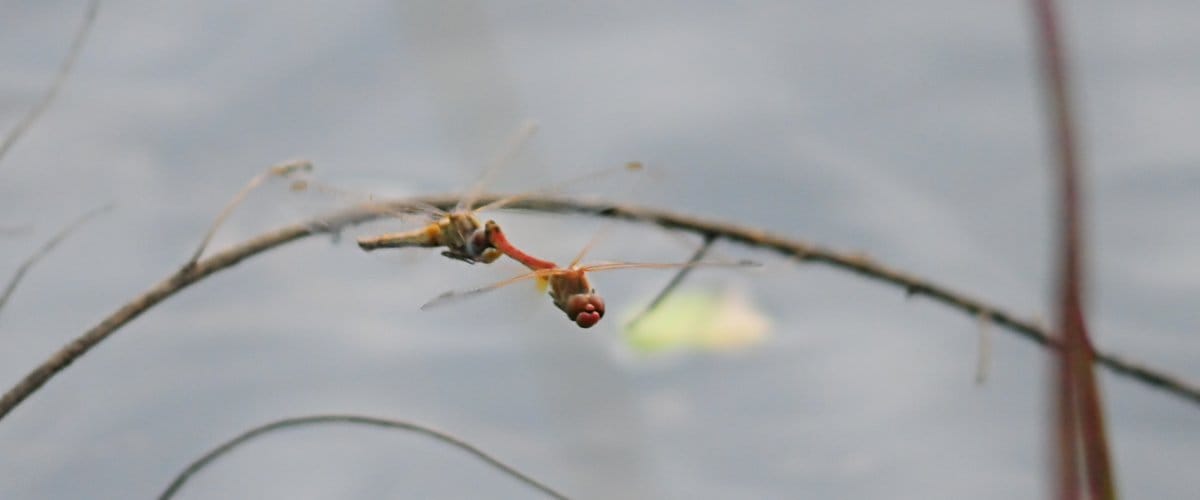 try to get the dragonflies doing something interesting. here the male is dragging the female about. pity about the background
try to get the dragonflies doing something interesting. here the male is dragging the female about. pity about the background
With practice, your chances of success increase dramatically. I know that when I have not digiscoped in a week or two, I am rusty and take a bit of time before I am really performing well.
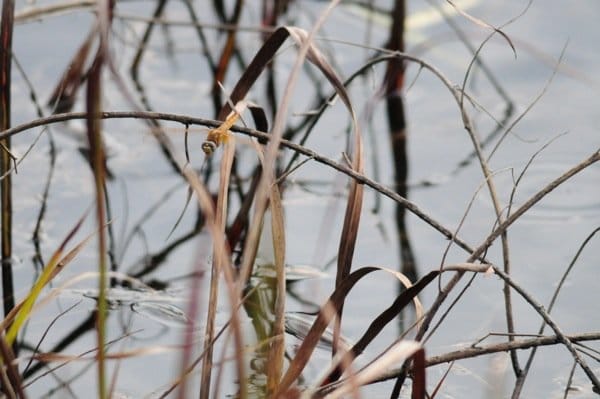 background is even more important for flying dragonflies than perched ones. This dragonfly is completely lost in the hectic background and one has to really look to see that it is flying.
background is even more important for flying dragonflies than perched ones. This dragonfly is completely lost in the hectic background and one has to really look to see that it is flying.
Questions? Comments? I would love to hear them.
Happy digiscoping,
Dale


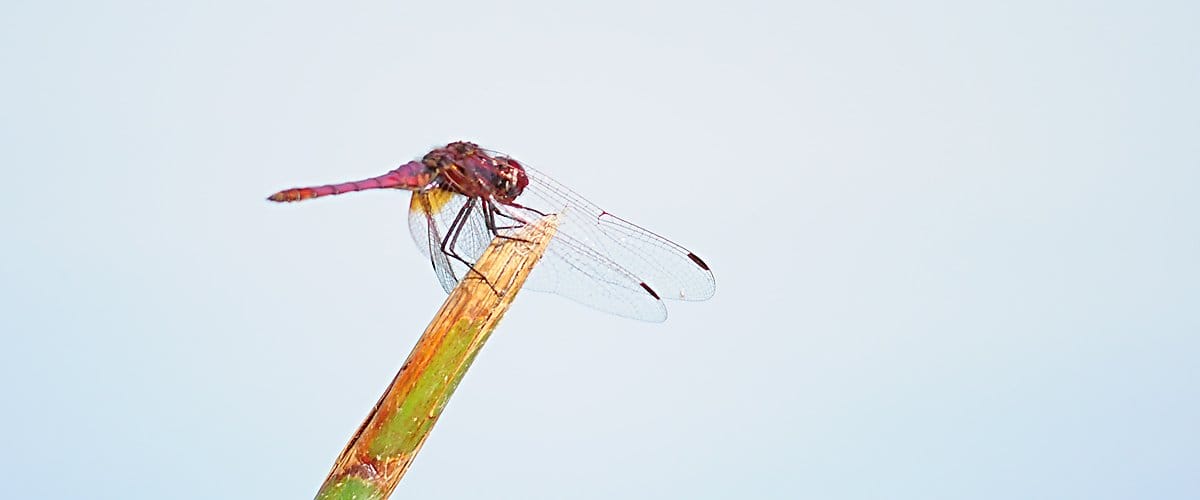











Love those reasons why dragonflies are better than birds.
The flight shots are really impressive. You must have a lot of patience, Dale. If I tried to photograph dragonflies in flight I think I’d probably smash up a few scopes in frustration.
I struggle with a DSLR and fast zoom! Brilliant shots Dale.
Dale,
take me out and show me how!
Show me, show me, show me!
@Tom, I was thinking of you when I wrote the reasons, figured you might agree with the reasoning 😉
I would say practice more than patience. The flight shots here were all taken within 10minutes of each other and I have a whole pile of keepers. One great advantage of photographing flying dragonflies over – for example swifts – is that some of them will hover in one place for a couple of second, making setup just a little bit easier. Say, are you going to be at the Rutland Fair this year? (not the pottery one, the bird one)
@John, thanks. for fast moving objects, manual focus can sometimes be a whole lot easier than autofocus (unless you have a brilliant camera and lens).
@Redgannet, if you come to birdfair this year we can chat a bit, if you wish. btw, I see you were in Pilansberg last year – these photos were incidentally all taken in that area. you certainly get around!
I’ll be at the Birdfair. I think the pottery fair was last weekend. I have a Swaro scope as well, though my bins are made by the evil twin.
According to physical laws, it is impossible to digiscope flying dragonflies.
In the plain and simple words of Joe Wilson: You Lie!
@Jochen, Joe Wilson also found nothing in Africa. At least I found 5 species of dargonflies and have photos to prove it. Ask the CIA, the will back up my side of the story 😉
Great shots Dale, especially the flying ones!